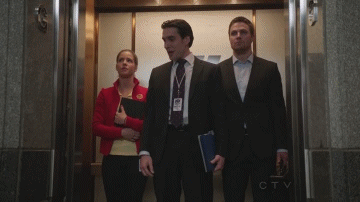“She was on the plane.” That’s what people have murmured in hushed, sometimes terrified, tones since November, seemingly in reference to a horrible crash or actual hostage situation. Everyone’s interested in recounting my experience on the Rihanna 777 Tour last fall, a seven-day trek through seven countries to watch the pop star perform seven abridged promo shows in an effort to – well, I’m not sure anyone was ever really clear on its purpose. In many ways, the 150 global journalists on board the chartered Delta 777 felt like hostages, albeit willing ones. The reports that filtered out that week, referencing long hours spent on runways, on buses that didn’t move, without real food or bathroom, are verifiable. That week was tedious and exhausting, rarely involving sleep, water or the necessary Internet access to file stories. There was a riot onboard the plane between Berlin and London, a stretch marked by 36 hours without sleep, and the entire journey, in many ways, felt like a social experiment.
A documentary crew was also on the plane, following the journalists and contest-winning fans around closely (and, obnoxiously, filming people’s open-mouthed faces on the rare occasion they did sleep). For a once in a lifetime event, one the general public followed – and still follows – with rapt interested, the eventual documentary, titled Rihanna 777, that the crew has released is basically watered-down propaganda. An hour-long version of the documentary aired last night on FOX and is accompanied by a slightly longer version on DVD today. Instead of revealing the entertaining tumult that characterized the 777 Tour, the documentary crew has chastened the experience in the editing room, glossing over the rioting incident and the long hours spent waiting around for Rihanna to finish lingerie shopping in Paris.
In some regard, that’s understandable. Rihanna already garnered significant amounts of negative press and criticism during the tour (Gawker referred to the event as “RihaArgo” and reported the tour as if it were a real hostage incident). But the pop star doesn’t really come out of the terse documentary looking like gold. The filmmakers are repeatedly forced to blur out her nipples or a blunt shoved behind her ear, and in one of the more interesting scenes, Rihanna, clearly stoned, unintelligibly blabbers about her role in pop music. Of course this documentary has far more of Rihanna than any of us saw that week while on tour with her. One of the greatest notes of criticism was that the singer invited us all onboard and then vanished, citing fatigue and later feigning to Rolling Stone in a cover story that she knew nothing of the near-mutiny.
Of course one of the universal issues with documentaries is their arguable failure to accurately represent reality, a problem written about extensively by film scholars in an effort to understand whether non-narrative filmmaking can reveal truth. Rihanna 777 does, in some regard, reveal truths of the experience. A narrative, although a notably shortened one, takes the viewer across seven countries, showcasing (some of) the hours spent waiting around and the unfortunate arrival into every city during their rush hour. Rihanna is shown performing one song in each city – and her real vocals are used on the track. The Australian shock jock who unwittingly initiated the riot between Berlin and London is actually shown streaking through the plane’s aisles, although his appearance is edited out of order in the sequence of real events that evening. What isn’t shown? A lot, but it’s mostly stuff you wouldn’t want to watch on TV anyway because it was tedious and exhausting and, ultimately, kind of dull.
I watched the documentary last night with two of Fuse crew members who were also on the plane (as well as a bottle of Jameson, procured as a means to ease the very real and apparently lingering sense of PTSD). We agreed, after watching it, that no one can ever really know what happened on that plane. You can read the reports, you can watch this documentary, but the experience of the 777 Tour isn’t exactly something easily conveyed. There truly was a sense of being taken hostage, of grappling with Stockholm Syndrome, of being involved in something akin to the Stanford Prison Experiment. But there was also an overwhelming sense of camaraderie and collective survival. It’s offered us a bragging point as our friends and colleagues fervently tell others that we were on the plane.
Rihanna 777 is a marketing product under the guise of a documentary, one that gives her fans a glossed=over look at an event now famous both in and outside of the music industry. There’s no revelation in the end and nothing is learned from it, but Rihanna’s fans will likely gravitate toward the DVD as a means of seeing more from the pop star. The “journalist” who drives the film, one Mike Ruffino, was clearly being paid to be a talking head. (Who is he? Apparently a writer for Playboy but none of us ever saw any of his dispatches from the tour and Google offers little else.) If you accept Rihanna 777 for what it really is, a way for Rihanna to sell DVDs to her extensive fan base, then it generally works.
One of the Fuse crew members suggested last evening that we should now leave the 777 Tour in the past, that this documentary should close the chapter on that experience. And while we’ll always want to tell the story of this fateful week that’s probably the reality of it, particularly since we can’t harp on it forever. But I may never be able to go back to Berlin for reasons this documentary crew largely left on the editing room floor and unless a found footage film of the 777 Tour eventually emerges there may never be an accurate reflection of our reality last November.



























